Water
Synonym(s):Water;aa;Deionized water;Distilled Water;Nuclease-Free Water
- CAS NO.:7732-18-5
- Empirical Formula: H2O
- Molecular Weight: 18.01
- MDL number: MFCD00011332
- EINECS: 231-791-2
- SAFETY DATA SHEET (SDS)
- Update Date: 2025-12-17 09:49:53

What is Water?
Chemical properties
colourless liquid
The Uses of Water
water is listed also as catalyzed, deionized, demineralized, distilled, pure spring, and purified water. Water is an important skin component and is essential for its proper functioning. It is the most common ingredient used in cosmetic formulations and, therefore, is generally listed first on product labels. Water is usually processed to eliminate hardness and minerals, and to avoid product contamination.
The Uses of Water
For use in the preparation of cell culture media, and cell suspension and washing solutions.
The Uses of Water
For use in embryo manipulation.
The Uses of Water
Water is a colorless, odorless, tasteless liquid formed by the combi- nation of two hydrogen and one oxygen atoms. it allows substances to dissolve and functions as a solvent, dispersing medium, hydrate, and promoter of chemical changes. it is a major constituent in meats, fruits, and vegetables. distilled water is obtained by conden- sation of water vapor.
What are the applications of Application
Water with 0.1% ammonium acetate is A pre-made HPLC solvent for use in analytical chromatography
What are the applications of Application
Water, HPLC is useful for HPLC studies
Indications
For diluting or dissolving drugs for intravenous, intramuscular or subcutaneous injection, according to instructions of the manufacturer of the drug to be administered [FDA Label].
Background
Water (chemical formula: H2O) is a transparent fluid which forms the world's streams, lakes, oceans and rain, and is the major constituent of the fluids of organisms. As a chemical compound, a water molecule contains one oxygen and two hydrogen atoms that are connected by covalent bonds. Water is a liquid at standard ambient temperature and pressure, but it often co-exists on Earth with its solid state, ice; and gaseous state, steam (water vapor).
What are the applications of Application
Water, DEPC-Treated is a ready to use, sterile filtered RNase-free water for reconstitution of lyophilized products.
What are the applications of Application
ddWater (endotoxin-free) is sterile, double distilled endotoxin-free water
Definition
ChEBI: An oxygen hydride consisting of an oxygen atom that is covalently bonded to two hydrogen atoms.
General Description
Water is widely used for HPCE (High-Performance Capillary Electrophoresis), luminescence and UV-spectroscopic studies.
Metabolism
Not Available
Purification Methods
Conductivity water (specific conductance ca 10-7 mho) can be obtained by distilling water in a steam-heated tin-lined still, then, after adding 0.25% of solid NaOH and 0.05% of KMnO4, distilling once more from an electrically heated Barnstead-type still, taking the middle fraction into a Jena glass bottle. During these operations suitable traps must be used to protect against entry of CO2 and NH3. Water, only a little less satisfactory for conductivity measurements (but containing traces of organic material) can be obtained by passing ordinary distilled water through a mixed bed ion-exchange column containing, for example, Amberlite resins IR 120 (cation exchange) and IRA 400 (anion exchange), or Amberlite MB-1. This treatment is also a convenient one for removing traces of heavy metals. (The metals Cu, Zn, Pb, Cd and Hg can be tested for by adding pure concentrated ammonia to 10mL of sample and shaking vigorously with 1.2mL of 0.001% dithizone in CCl4. Less than 0.1Yg of metal ion will impart a faint colour to the CCl4 layer.) For almost all laboratory purposes, simple distillation yields water of adequate purity, and most of the volatile contaminants such as ammonia and CO2 are removed if the first fraction of distillate is discarded. Most laboratories have glass stills that “doubly” or “trebly” distil water. [See “water” in Chapter 1.]
Properties of Water
| Melting point: | 0.0 °C |
| Boiling point: | 100 °C(lit.) |
| Density | 0.998 g/cm3 (20℃) |
| vapor density | <1 (vs air) |
| vapor pressure | 3 mm Hg ( 37 °C) |
| refractive index | n |
| storage temp. | Store at +5°C to +30°C. |
| solubility | Miscible in methanol, acetone, Ethanol. |
| form | liquid |
| color | colorless |
| Specific Gravity | 1.000 (20/20℃) |
| Odor | at 100.00?%. odorless |
| PH | 7 (20 °C) |
| Relative polarity | 9 |
| Water Solubility | Soluble in water. Insoluble in polar liquids. |
| λmax | λ: 205 nm Amax: 0.01 λ: 210 nm Amax: 0.01 λ: 250-400 nm Amax: 0.005 |
| Merck | 14,10039 |
| BRN | 2050024 |
| Dielectric constant | 88.0(0℃) |
| Stability: | Stable. Incompatible with reactive metals. |
| CAS DataBase Reference | 7732-18-5(CAS DataBase Reference) |
| EPA Substance Registry System | Water (7732-18-5) |
Safety information for Water
| Signal word | Warning |
| Pictogram(s) |
 Exclamation Mark Irritant GHS07 |
| GHS Hazard Statements |
H315:Skin corrosion/irritation H319:Serious eye damage/eye irritation H335:Specific target organ toxicity, single exposure;Respiratory tract irritation |
| Precautionary Statement Codes |
P280:Wear protective gloves/protective clothing/eye protection/face protection. P321:Specific treatment (see … on this label). P305+P351+P338:IF IN EYES: Rinse cautiously with water for several minutes. Remove contact lenses, if present and easy to do. Continuerinsing. |
Computed Descriptors for Water
Water manufacturer
New Products
4,4-Difluoropiperidine hydrochloride tert-butyl 9-methoxy-3-azaspiro[5.5]undecane-3-carboxylate Indole Methyl Resin N-Isopropylurea N,N-Dicyclohexylcarbodiimide(DCC) MELDRUMS ACID 5-METHYLISOXAZOLE-4-CARBOXYLIC ACID Magnessium Bis glycinate Zinc ascorbate 1-bromo-2-butyne 2-acetamidophenol 9(10H)-anthracenone Erythrosin B, 4-Piperidinopiperidine 2-((4-morpholinophenylamino) (methylthio) methylene) malononitrile 2,4-dihydroxybenzaldehyde 3-(4-morpholinophenylamino)-5-amino-1H-pyrazole-4-carbonitrile Methyl 2-methylquinoline-6-carboxylate 2,6-dichloro-4-nitropyridine 4-Bromo-2-chlorobenzonitrile 2-(benzylamino)acetic acid hydrochloride 4-(tert-Butoxycarbonylamino)but- 2-ynoic acid 3,4-dihydro-2H-benzo[b][1,4]dioxepine 1-Phenyl-1-cycloprppanecarboxylicacidRelated products of tetrahydrofuran

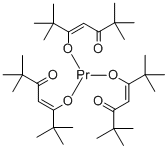






You may like
-
 Caustic Soda Lye 99%View Details
Caustic Soda Lye 99%View Details -
 Sodium Hydrate 99%View Details
Sodium Hydrate 99%View Details -
 Zero Cell CASView Details
Zero Cell CASView Details -
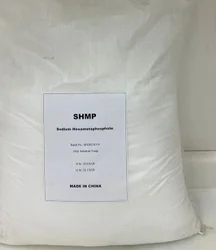 Sodium Hexametaphosphate ShmpView Details
Sodium Hexametaphosphate ShmpView Details
10124-56-8 -
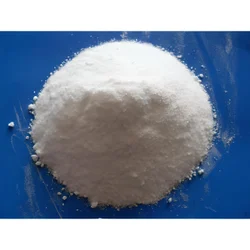 Sodium Hexametaphosphate SHMP, Packaging Type: Bag, Packaging Size: 25 kgView Details
Sodium Hexametaphosphate SHMP, Packaging Type: Bag, Packaging Size: 25 kgView Details
10124-56-8 -
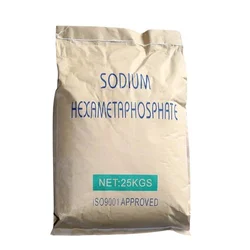 Sodium Hexa Meta Phosphate SHMPView Details
Sodium Hexa Meta Phosphate SHMPView Details
10124-56-8 -
 Sodium Hexametaphosphate ShmpView Details
Sodium Hexametaphosphate ShmpView Details
10124-56-8 -
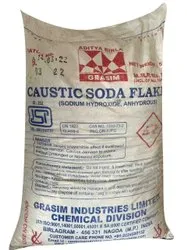 Industrial Grade 99% Caustic Soda Flake, 50 Kg Bag, 1310-73-2View Details
Industrial Grade 99% Caustic Soda Flake, 50 Kg Bag, 1310-73-2View Details
1310-73-2
